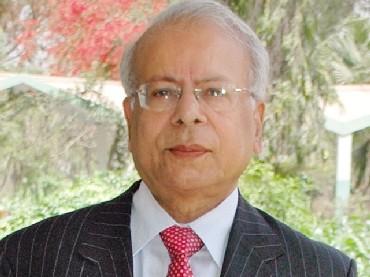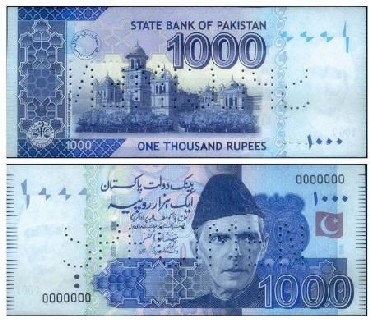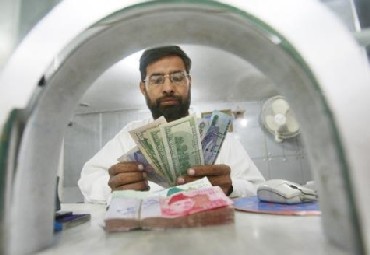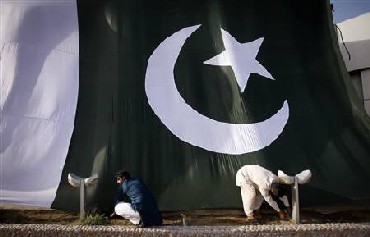 | « Back to article | Print this article |
'Better India-Pak trade will be win-win for all'
Ishrat Husain, governor of the State Bank of Pakistan from 1999 to 2005, shares his concern about Pakistan's economy.
You became the governor of Pakistan's central bank in December 1999 and in your six-year tenure, you restructured the central bank as well as steered the reforms of the banking sector in Pakistan. These reforms are now recognised by the World Bank and the International Monetary Fund to be among the best in developing countries. Among the elements of reform were merit-based recruitment, better training, performance-linked promotion, technology-driven business process and induction of high-level skilled human resources. The State Bank of Pakistan experience is a test case for Pakistan that it is possible to transform state-owned undertakings as well. But now, there are a lot of worries about Pakistan's economy. What is keeping you awake at nights these days?
A major problem is fiscal imbalance, which has been growing for the last three-four years. Pakistan has a high debt ratio and borrowing from the banking system, including the central bank, which has led to high inflationary pressures. Investors are reluctant to make decisions about expansion and capacity creation because of macro data.
Click NEXT to read more...
'Better India-Pak trade will be win-win for all'
What about Pakistan's fiscal deficit?
Pakistan is not raising revenues to the optimum extent. The tax to the GDP ratio is below 10 per cent. In India, for instance, it is closer to 15 per cent.
Tax evasion through underestimation and concealment of income has led to an almost 50 per cent reduction in tax collection as compared to its potential. This gap needs to be filled by better administration and penalties.
And, in Pakistan, subsidies are totally untargeted, which results in subsidy benefiting the rich rather than the poor. Take power.
Against the average selling rate of approximately Rs (Pakistani rupees) 7.5/kwh, residential users consuming 45 per cent of the country's electricity were on average paying Rs 7/kwh.
However, 75 per cent of the residential users utilising 1-300 units were using electricity at a rate of Rs 5.5/kwh, implying a 28 per cent discount to general tariff rates and a 45 per cent discount to generation cost. It means those using air conditioners are being subsidised by the state.
Click NEXT to read more...
'Better India-Pak trade will be win-win for all'
CNG is 42 per cent less than petrol prices. But 72 per cent of all CNG is used by car owners.
State land is being given to industry below market prices. This is then being sold at prices way above the rate at which it was allotted.
And, of course, there is the issue of loss-making public sector companies. Pakistan railways and steel mills are making huge losses, which are paid for out of the Budget.
When I was the governor of the central bank, 80 per cent of the government banks were loss-making. We privatised these banks instead of subsidising them. These are now a source of income, leading to better efficiency, use of the government's scarce resources and helping subsidise nutrition and health programmes.
The government expenditure is ballooning. Politicians believe creating government jobs ensures political support. All it does is magnify fiscal deficit. The private sector needs an enabling environment, so that there is more investment and productive activities and more jobs are created.
Click NEXT to read more...
'Better India-Pak trade will be win-win for all'
Like India, Pakistan also has a large agrarian base. With the current fluctuation in global commodity prices...
Pakistan mainly grows cotton, wheat, rice and sugarcane. Farmers gained Rs 3-4 billion, which is about $5 billion, because of recent spikes in commodity prices. But, in the future, these commodities don't look as promising.
Cotton prices are already depressed. Wheat support prices have gone up because of the increase in the cost of inputs.
But wages are linked to the price of wheat distributed through the public distribution system (PDS). And, Pakistan's PDS is not effective.
There are reports that wheat has been procured at below purchase prices and sold to favoured mills at a premium. Small farmers have suffered as a result and food department officials have pocketed the difference themselves.
Click NEXT to read more...
'Better India-Pak trade will be win-win for all'
There is a feeling that Pakistan's economy has been shored up by the infusion of funds because of the war in Afghanistan and the day the war is over, it will collapse.
That is not correct. Between 2002 and 2007, the investment ratio as a proportion of GDP rose from 14 per cent to 23 per cent.
Capacity utilisation in the manufacturing sector was utilised fully and, in some cases such as auto, cement and construction, there was expansion. So, the growth rate of manufacturing and the related services was high.
This led to an average 7.5 per cent growth rate for five years. Fuelled by rising investment in two of these five years, Pakistan had a current account surplus, not deficit.
We had a favourable balance of payments position, single-digit inflation, low interest rates and a slack in the economy. The economy was kickstarted by a proactive monetary policy. The war only started in 2007.
We had other problems. President Pervez Musharraf got involved in a fight with the judiciary.
Click NEXT to read more...
'Better India-Pak trade will be win-win for all'
There were public demonstrations, followed by the assassination of Benazir Bhutto, and, eventually, the transition from a military to a democratic government.
All through 2007, as the elections were being held, no one paid attention to the economy. It was not heeded at a time when it needed a strong hand at the helm.
But we are working a way out. China is now our biggest investor, followed by the United States. We are working on a Renminbi swap, under which Pakistani importers would be able to buy machineries and other goods from China in Pakistani rupees, instead of US dollars.
The rupee payments made by Pakistani importers can be utilised by Chinese companies working in Pakistan or by the Chinese yarn importers.
Such an agreement would help steady Pakistan's foreign exchange reserves and the rupee. The agreement should be in place by the end of the year.
Click NEXT to read more...
'Better India-Pak trade will be win-win for all'
What about India-Pakistan trade and economic relations?
I am a great believer that normalised India-Pakistan trade will be a win-win situation for everyone.
All studies on official trade show trade will multiply five times if all hurdles are removed. The most effective way to normalise trade is to keep all other disputes out of trade.







